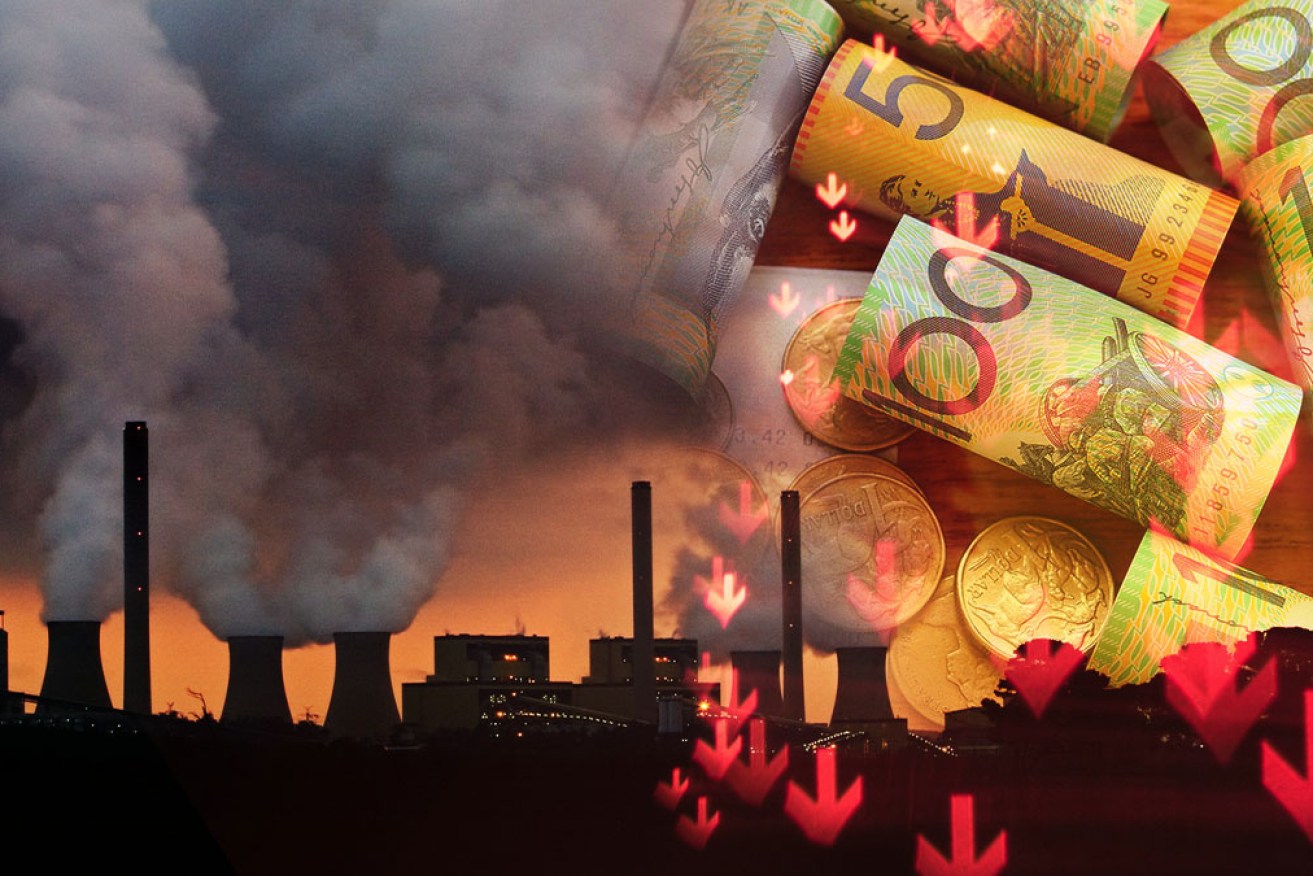Energy retailers are being clobbered. Here’s why that’s good news for you


The latest investment is cementing green hydrogen's place as the no-emission fuel of a cleaner, healthier planet.Photo: TND
Australia’s big listed energy companies are being clobbered as new renewable energy production moves into the market – and you stand to benefit through lower energy prices.
Just a little over three years ago, in January 2018, Big Coal accounted for 72.3 per cent of Australia’s electricity production while wind and solar represented 10.1 per cent.
In May this year, coal had shrunk to 64.2 per cent of the market while renewables more than doubled to 22.3 per cent, according to figures provided by Hugh Saddler, honorary professor at ANU’s Centre for Climate Economics and Policy.
What is remarkable about that is the shift to renewables continues despite the fact that the subsidy arrangement, known as the Renewable Energy Target, ran out in January this year.
But the falling costs of renewable energy production mean that private sector operators continue to build new wind and solar plants at record levels.
“Renewable energy is now coming into the market at very low prices, around 35c per kilowatt hour. That is below the marginal cost of running some existing coal stations,” said Andreas Lundberg, energy analyst with Montgomery Investment management.
That means it is cheaper to build new renewables than it is to run many existing coal-fired power stations, so renewable energy is knocking coal out of the market and pushing power prices down.
That is starting to show up in the share prices of major coal generation owners Origin and AGL. Origin on Friday announced it was writing down the value of its generation assets by $1.6 billion and has seen its share price fall from $4.6 to $4.1 in a month.

Origin Energy’s share price was hit when the company announced it would write down its generation assets. Source: Commsec
Its market heavyweight partner, AGL, has more than halved in value over the past year, falling to $7.23 as of Friday’s closing bell. Investors hit AGL because they are unconvinced by its plan to split its coal assets from energy retailing operations.
“The big companies are being squeezed between a rock and a hard place, with renewable energy pushing down the wholesale market price. At the same time we’re seeing gas and coal prices go up,” Mr Lundberg said.
The rise in gas prices is being triggered by growing sales of liquid natural gas into export markets while coal prices are also being influenced by offshore demand.
So the costs of the coal and gas generation owned by the Big Two is rising while prices are falling.
Energy prices: A consumer opportunity
The rush of new renewables in the market at a time when the big firms are under pressure is a good thing for consumers.
“Competition in the market is strong enough to stop AGL and Origin pushing prices up,” Mr Lundberg said.
“Now that a standard rate is being published with retailers discounting against that, it is time to look around. I recently got a deal that was 5 per cent below what I was first offered.”
AGL hits trouble
AGL’s move to split in recent times is striking trouble because it is behind the times internationally and has been caught out by a change in politics in the United States under President Joe Biden.
“With the Biden election the political landscape has changed dramatically with the realisation that carbon has become a big issue in electricity starting to dawn here in Australia,” said Bruce Mountain, energy policy professor at Victoria University.
That realisation has belatedly made AGL act to try to split its coal business from retailing and renewables because it is the only way it will be able to fund a future in renewables.
“A bunch of large power companies in Holland, Germany, Italy and Spain all restructured five to 10 years ago to split off fossil fuels from their new energy portfolios,” Professor Mountain said.

AGL was very late to the renewables party and its shares have fallen. Source: Commsec
“They had to do that to attract the new investment into renewables because investors didn’t want to buy into a company with a whole lot of fossil fuels,” Professor Mountain said.
So their strategy was to hold fossil fuel operations that would gradually decline in a separate company that didn’t have to attract new investors.
AGL has woken up to that reality recently, Professor Mountain said.
“AGL, which has been underweight wind and solar generation as a proportion of their total output by far, suddenly found that in order to compete in the new world they’re going to need lots of capital because they’ll have to build or buy renewable capacity,” he explained.
Ratings agency Moody’s advised investors the move will weaken the power-generation arm at a time of mounting physical and regulatory risks from climate change.
“AGL’s business profile will undergo a structural weakening over the next 12 to eight months should the demerger be executed,” Moody’s said in a report.
The government’s Energy Security Board has just recommended what Energy Minister Angus Taylor called a “capacity mechanism” to pay coal and gas power stations to stay in the market and guarantee supply.
The plan, yet to be formally released, “is a clumsy, blunt instrument without necessary components to encourage new forms of generation or new forms of supply firming. Rather it is just getting the old generation types to provide that,” said Professor Saddler.








